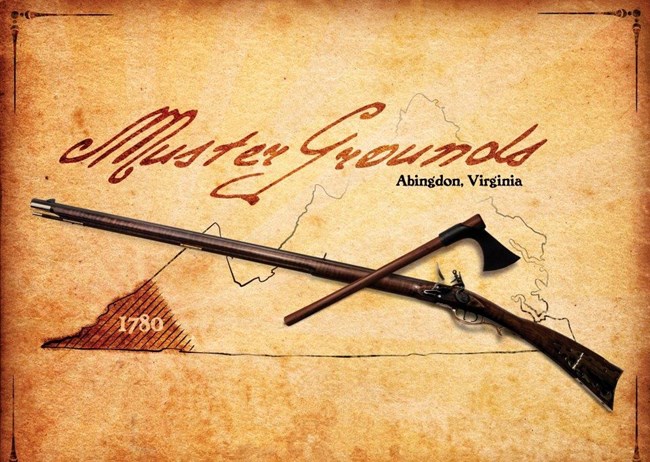No photo was found with that id.
Article
Abingdon Muster Grounds

Abingdon Muster Grounds
The Abingdon Muster Grounds are owned by the Town of Abingdon, Virginia and operated through an agreement with the Overmountain Victory Trail Association.
For more information, visit the town's website at:
Abingdon Virginia | Abingdon Muster Grounds (visitabingdonvirginia.com)
Where?
1780 Muster Place, Abingdon, Virginia, 24210
When?
The Keller Interpretive Center is open by appointment, and the grounds of the Abingdon Muster Grounds are open dawn to dusk.
This location has a "National Park Passport" stamp for their portion of the Overmountain Victory National Historic Trail! To find out more, head to the "Passport Stamps" page here!
For contact information visit:
Abingdon Virginia | Abingdon Muster Grounds (visitabingdonvirginia.com)
or find "Abingdon Muster Grounds" on social media.

NPS
The Abingdon Muster Grounds features the Keller Interpretive Center operated by non-profit volunteers and is open by appointment and on some weekends. The Center features displays and artifacts related to the American Revolution in southwest Virginia and the role the Abingdon Muster Grounds played in the 1780 Battle of Kings Mountain.
As the location where hundreds of Virginia Patriots gathered in 1780 to begin their journey to the Battle of Kings Mountain, this site serves as the western (and northern-most) trailhead for the Overmountain Victory National Historic Trail (OVNHT).
This site also is host to Wolf Creek, whose recent streambank restoration project has made it a destination for urban trout fishers.
Along Wolf Creek extends the 0.75-mile Wolf Creek Trail. This paved trail begins at the Abingdon Muster Grounds or an additional gravel parking area at the corner of Hagy Street and Fugate Street SW, and follows Wolf Creek down to a small parking area on Stone Mill Road. The grounds and trail are open dawn to dusk.

NPS
September 24, 1780
William Campbell was the colonel in command of the Patriot fighting men in Washington County, Virginia. Fellow Patriot leaders in North Carolina sent Campbell numerous requests for aid as they feared an attack led by British Major Patrick Ferguson and his growing army of Loyalists (pro-British locals).
William Campbell at first refused to offer aid against a distant enemy, citing the greater need to defend Patriot efforts in southwest Virginia against local Loyalists and possible warfare against British-allied American Indian nations such as the Shawnee and Cherokee. However, William Campbell eventually agreed to lead a portion of his county's militia and strike Major Ferguson's army before they could reach Virginia and give aid to the other pro-British forces in the region. Campbell gathered 200 of his militiamen and began the journey to a planned meeting at Sycamore Shoals, current Elizabethton, Tennessee. Soon 200 more Virginians under Colonel Arthur Campbell would also begin the journey and catch up with their fellow Virginians at Sycamore Shoals.
The field at the Abingdon Muster Grounds is a remnant of the original "muster ground," a popular gathering place, then known as Craig’s Meadow or Dunn's Meadow. Each county had at least one of these muster grounds where the county's legally-required regiment of militia would gather and practice military exercises every few months or sometimes more often if the practice was thought needed. These places were usually easy for men from across the county to find, offered a large open space for the men to practice marching and shooting, and were often located near the homes of some of their leaders who treated the men to food and drink. "Musterings" as these gatherings were called were a blend of military training and social event, with families accompanying the men and revelry closely following the end of each day's practicing.
Last updated: August 1, 2024
